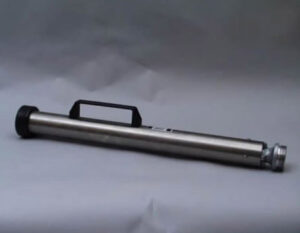CO2 fire suppression systems are a type of fixed fire protection system that uses carbon dioxide (CO2) gas to extinguish flames. They are often used in areas where water damage would be unacceptable, such as computer rooms, server rooms, and electrical vaults.
How CO2 fire suppression systems work:
Benefits of CO2 fire suppression systems:
Drawbacks of CO2 fire suppression systems:
Applications of CO2 fire suppression systems:
Here are some additional things to keep in mind about CO2 fire suppression systems:
I hope this information is helpful! Let me know if you have any other questions.
FM 200 is a clean agent fire suppressant that works by removing the heat from the fire triangle (oxygen, heat, and fuel). It is a colorless, odorless, and electrically non-conductive gas that leaves no residue to clean up. It is safe for use in occupied spaces and for the ozone layer.
FM 200 fire suppression systems are widely accepted and respected around the world, with a history of protecting the world’s most crucial and irreplaceable assets. It’s used in thousands of applications—including cultural property, data centers, and critical infrastructure—across more than 70 countries.
FM 200 fire suppression systems offer exceptionally fast fire protection, reaching extinguishing levels in ten seconds or less. They stop ordinary combustible, electrical, and flammable liquid fires before they cause significant damage, and are safe for use around people. FM-200 fire systems are also the superior choice, particularly in applications where space is a premium.
The FM 200 agent is stored in cylinders as a liquid and pressurized with nitrogen, saving significant storage space. In fact, for the same amount of protection, FM-200 fire systems take up to seven times less storage space than systems based on CO₂ and inert gases.
FM-200™ is a trademark of The Chemours Company
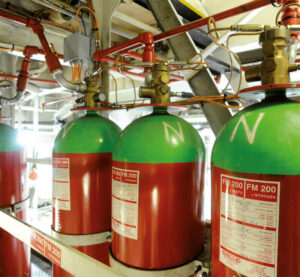
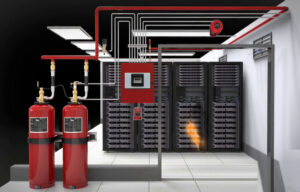
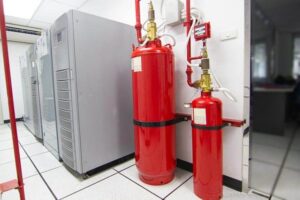
Novec 1230 is a clean agent fire extinguishant that is stored as a liquid and discharged as a gas. It is designed to protect people, equipment and the environment from fire hazards.
Novec 1230 is a fluorinated ketone that belongs to a family of chemicals called halocarbons. It has a global warming potential (GWP) of less than one, which means it has minimal impact on the climate. It also has zero ozone depletion potential (ODP) and a short atmospheric lifetime of about five days.
Novec 1230 fire suppression systems work by rapidly removing heat from the fire, causing it to extinguish in seconds. It does not harm the equipment or leave any residue behind, unlike water-based or powder-based fire suppression systems. It is electrically non-conductive and compatible with most materials.
Novec™ is a trademark of 3M™
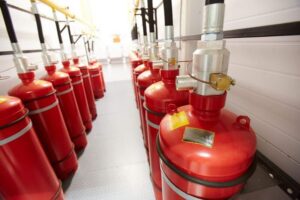

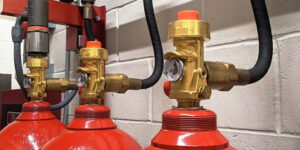

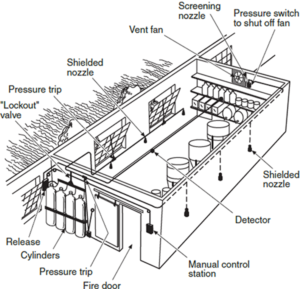
The term “clean agent system” in firefighting refers to a specialized fire suppression system designed to extinguish fires without leaving a residue or causing damage to sensitive equipment. These systems are particularly important in environments where water-based suppression methods could cause additional damage, such as data centers, laboratories, or museums.
Here are some key points about clean agent fire suppression systems:
In summary, clean agent fire suppression systems offer an effective and environmentally responsible solution for protecting sensitive areas and equipment from fire damage. Proper design, installation, and maintenance are critical to ensuring the system’s reliability and effectiveness in the event of a fire.
In summary, clean agent fire suppression systems offer an effective and environmentally responsible solution for protecting sensitive areas and equipment from fire damage. Proper design, installation, and maintenance are critical to ensuring the system’s reliability and effectiveness in the event of a fire.
An inert gas (IG) system is a type of fire fighting system that uses an inert gas, such as argon or nitrogen, to extinguish a fire by displacing oxygen. Inert gases are non-combustible and non-toxic, making them a safe and effective way to extinguish fires in a variety of applications.
Here’s how an IG system works:
Here are some of the advantages of using an IG system:
Here are some of the disadvantages of using an IG system:
Overall, IG systems are a safe and effective way to extinguish fires in a variety of applications. However, it is important to weigh the advantages and disadvantages of IG systems before installing one in your facility.


National Foam’s latest range of foam concentrates incorporate both fluorinated foams, which contain only C6 fluorosurfactants and fluorine free foams. These products meet the same approvals, and deliver improved firefighting performance and reduced environmental impact. “Assurance is about firefighting and environmental performance that you can rely on. It is an integral part of our approach to firefighting foam development.”
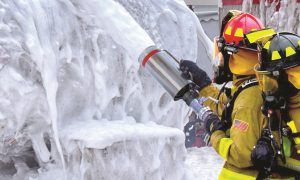
Foam Bladder Tanks offer a reliable and simpler method of foam proportioning. Bladder Tank system includes a pressure-rated tank with an internal rubber bladder. Upon system actuation, incoming water applies pressure to the rubber bladder, which supplies pressurized foam concentrate to the proportioning device (ratio controller). The foam ratio controller meters the foam concentrate into the fire water line, creating foam solution. The solution is then piped to the discharge devices protecting the hazard area. Bladder tanks are available in horizontal and vertical mounting with a completely pre-piped option. HD Foam Bladder Tanks carry UL, FM and CE Approvals. Please contact our sales for further details on approvals and certifications.
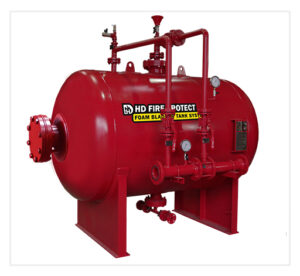
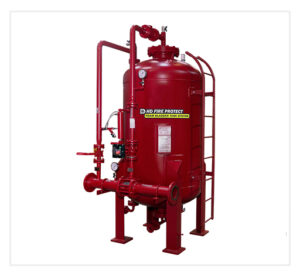
Firetech manufactures UL Certified Vertical Bladder Tank from range of 200L to 15000L capacity.
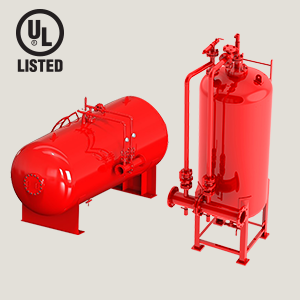
The Spartan Foam Cabinet is highly effective product for Gas Stations, Petrochemical Factories, Industrial Facilities, Warehouses and generally for all areas that protection is required due to fire Classes A and B.
High Rates on A and B Fire Classes.
Ergonomic design for easy use by one Operator.
The top of the Cabinet is designed for outdoor mounting.
Environmental Friendly Foam.
Specifications & Contents
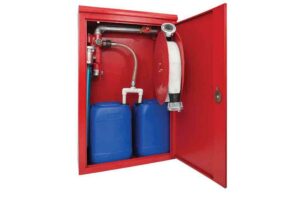
The Bele high expansion foam generators can be used for applications such as:
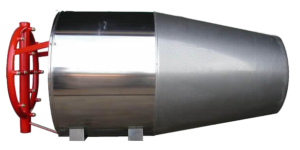
The Fomtec LX 800 foam branchpipe produces low expansion foam of high quality. The quality is generated by the optimal air inlet nozzle. The advantage of low expansion is the long throw range and the excellent cooling effect.
Options
The LX 800 could be delivered with the following options:
Application
Recommended Foam Concentrates
Operation
The branchpipe should be connected to the hose-line. To start foam application, open the ball valve. It is also necessary to flush the branch-pipe with clear water after every use.
